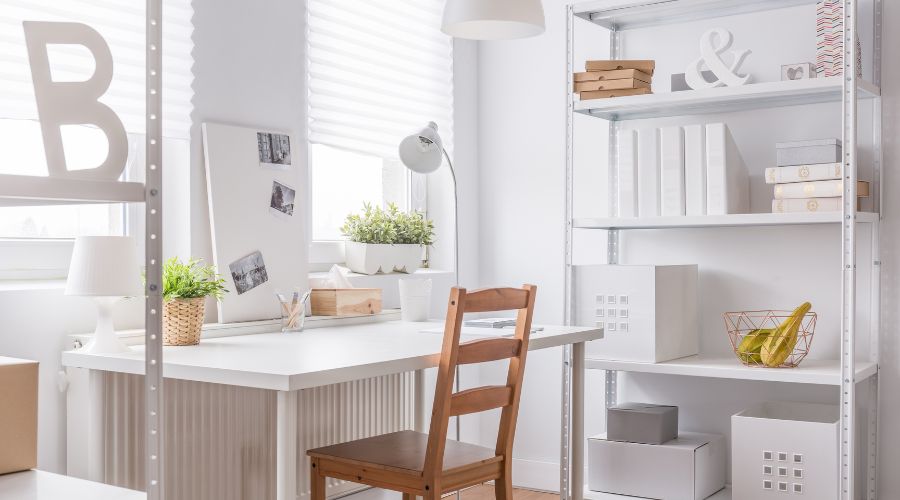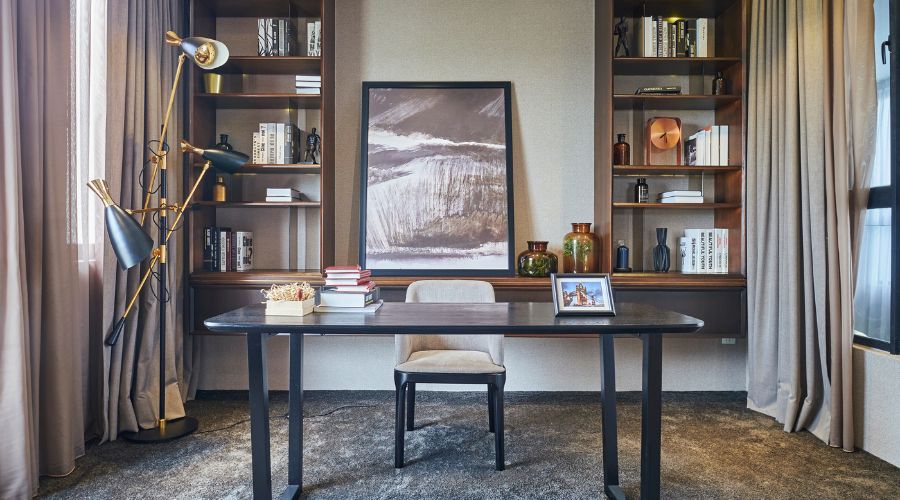Revamping Your Study: Design Strategies for a Classy and Functional Room
Introduction
In a world filled with distractions, it has become increasingly challenging to be productive and pursue creative endeavours that require focus and dedication. Therefore, having a dedicated space for oneself, i.e. a well-designed study room is no longer a luxury but has become an absolute necessity for enhancing both efficiency and work productivity. However, simply placing a dull table and a chair in a room’s corner and calling it a day won’t suffice your design needs or accomplish your productivity goals. A study room is one of the most functional spaces in your home, hence its design requires effort and careful thought.
You may have a study room that requires refurbishing or planning to create a new study room from scratch, the study room design ideas shared below will help you to create a space that promotes comfort, focus, and creativity. Incorporating thoughtful study room design ideas into your workspace will not only enhance the appearance but also transform the workspace into a clutter-free, organised, and comfortable sanctuary encouraging high productivity levels.
This blog aims to explore the top study room design ideas for homes that strike a balance between classic appearance and functionality. Additionally, let’s also look at the aspects you need to consider before incorporating study room design ideas.

1. Consider the Purpose of Your Room
It is paramount that one must define the purpose of the study room and understand who will be using the space. A study room designed for a student will be starkly different from a working professional or a creative individual who wants to invest their time in writing or crafting artistic expressions. By identifying the user’s need, you can prepare a roadmap for the design of the study room. Ask questions like does the person (student, working adult) want to face the window while working to seek fresh air? Or do they prefer facing a wall or a vision board to concentrate better? Taking these considerations is necessary to design a harmonious workspace that aligns with one’s personal taste and preferences.
- Study Room Design Ideas for Children:
To design a study room for school children, make sure the room is away from the noise and commotion of the rest of the home. Make the room clutter-free and organised by incorporating multi-purpose high quality furniture and additional storage space for all those textbooks, stationery, and assignment papers. A table made of hardwood such as Oak wood or Sheesham wood will be ideal for a student’s study room. Pair this table with a comfortable chair that supports the back and neck. For colours, you can opt for a bright yellow or an orange to pop the burst of energy in the room. Otherwise, if you wish to go for something more mild, choose a pastel shade of mint green, blue or pink. As for lighting, create a harmonious mix of ambient and natural lighting for proper illumination during study sessions.
- Study Room Design Ideas for Working Professionals:
Adults need a quiet and clutter-free space that enhances focus and allows them to think, plan and strategize their actions. Ideally, the room should be soundproof to facilitate uninterrupted conference calls and virtual meetings. Choose ergonomic furniture, such as a good quality revolving chair, supporting your back, and a sturdy table for all your work essentials like a laptop, notebook, pen holder etc. For colour palette, choose neutral colour palette like white, beige and ivory with minimalist design settings. Add shelves or cabinets to store books, stationery, and other work-related items, ensuring the space remains tidy and organised.
2. Direction of the Room

According to Vastu Shastra, the ideal direction for a study room is the East, West, or North-East direction. These directions are considered auspicious to work and build focus without getting distracted. If the study room has windows, it will allow the morning light to spread across the room, banishing gloominess and building an atmosphere of positivity. Another essential aspect of the study room is that it should be free from distracting sounds, hence create a study room in that part of your part of the house that receives the least amount of noise or chattering sounds. This ensures an environment which is conducive to focus, learn and retain.
3. Study Room Design Ideas as per Vastu
Many people consider Vastu to be a pivotal factor in determining how the layout of their study room will be. As mentioned earlier, the directions of east, west, and northeast are considered most appropriate for positioning a study room, with the study table facing the same direction. Many Vastu experts opine that if the study table faces the wall, there should be a slight distance between the wall and the table for a better energy flow. Adorn the wall with a motivating poster or a vision board or a grid board. Choose light pastel colours of tangerine, yellow, off white and green. It is best not to stack books on the study table rather than keep them in a storage drawer or a separate cabinet. You may also keep a clear quartz crystal, or an amethyst on the study table for promoting mental clarity and ward off distractions.
4. Luxury Study Room Design:

To create a luxurious study room, incorporate luxe furniture pieces made of premium materials. You may add leather or soft velvet chairs for seating, creating an elegant look. Next, include a hardwood desk with durable fibreglass for added protection. Incorporate personalised items like an art piece or vintage decor to elevate the room’s depth and character. For a truly sophisticated feel, invest in exquisite materials, wooden panelling, floor lamps for lighting a premium wall clock, and wall accents to add that flair of luxury. Keep a rustic wooden bookshelf for showcasing all your prized book collections. However, be mindful not to go overboard with decoration—the space is still reserved for work and studying and must remain functional
5. Furniture for Study Room:
The furniture for a study room should be chosen depending on the user— an adult, a college student, or a kid. Start with ergonomic furniture like a chair with adjustable height and swivel which supports your back and neck. A spacious study desk with drawers for storage is essential as well. The timeless classic hardwood furniture adds both aesthetic and functionality to a study room. Apart from the essential desk and chair, add a cabinetry for storage and organisation. You may also install shelves on walls to keep your books, decorations and calendar. Additionally, if your room space allows, add some extra furniture like an ottoman, setti or a couch to take a break on, relax and rest.

6. Lighting Design Ideas for Study Room:
If your study room has windows, use natural lighting as much as you can to create illumination. For the study desk, an ergonomic table lamp with an ample amount of light is essential. Make sure the table lamp is compact and does not clutter your workspace. To create an extra layer of lighting, create a false ceiling with recessed lights. If you want to give your room a modern touch, include a ceiling light fixture suspended at the centre of the room that can provide both functionality and aesthetics.
7. Study Room Design for Small Spaces:
For small study rooms, make use of smart, space-saving furniture. A small study table that allows you to keep your laptop, a notebook, and a table lamp should be enough. You can consider a multipurpose table that has drawers where you can place your belongings. Use the wall area to install shelf fixtures to keep your novel collection, clock, calendar, and other knick-knacks. Choose a light pastel shade for wall paint to colour your room, to make it look spacious. Add personality to your room by putting up a poster of your favourite quotes or keep objects that symbolise energy and vigour in your life.
Wrap up
We hope these study room design ideas have inspired you on how to create or revamp a classy yet functional space for yourself. Feel free to add your innovation and personal touch to the design of the study room—after all, personalization is a big aspect of creating a space to let your creative juices flow.
